GISP Method – The Secrets To The Best Fresh Milled Flour Bread
What exactly is The Grains In Small Places (GISP) Method? The GISP method is a series of tricks that I have developed over the years working with fresh milled flour. I went through so many tests, troubleshooting, and just straight up failures to learn all that I have learned! And, I am still learning with every bake! So, now I want to share all my secrets to getting the best fresh milled flour breads and baked goods. So, let’s dive right into it.
*pssst- If you are only interested in sourdough, scroll to the bottom, I have a Bonus GISP Sourdough Methods Section
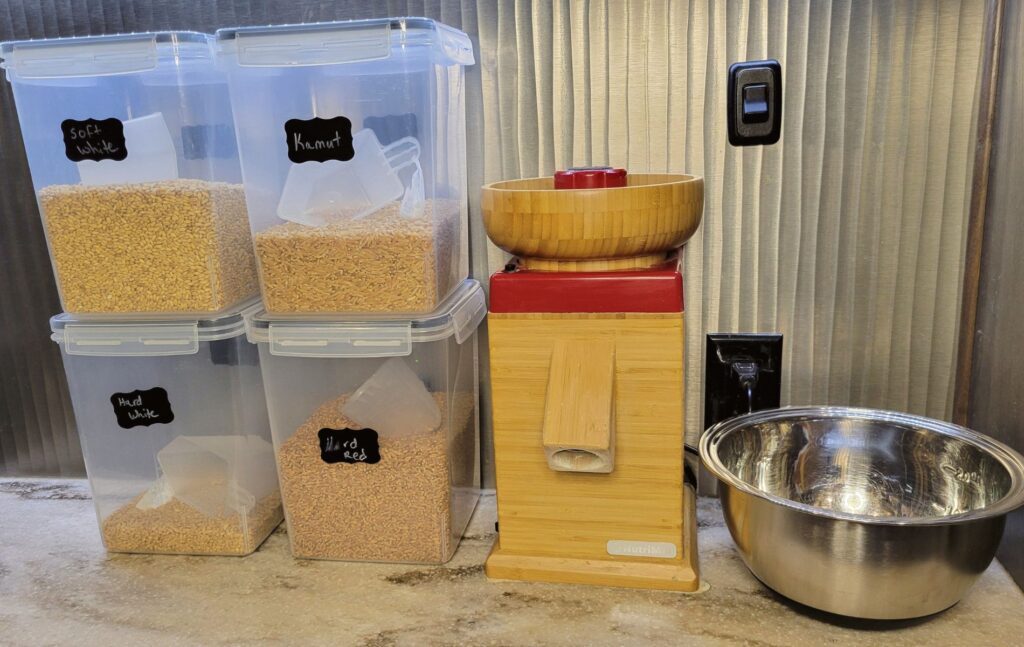
So, as you know each person is a different baker with different experiences. I find a lot of people who are experienced with baking with white flour, will tend to bring over some of those tried and true rules they learned, but fresh milled flour is just different. So, all those rules don’t really work out the same.
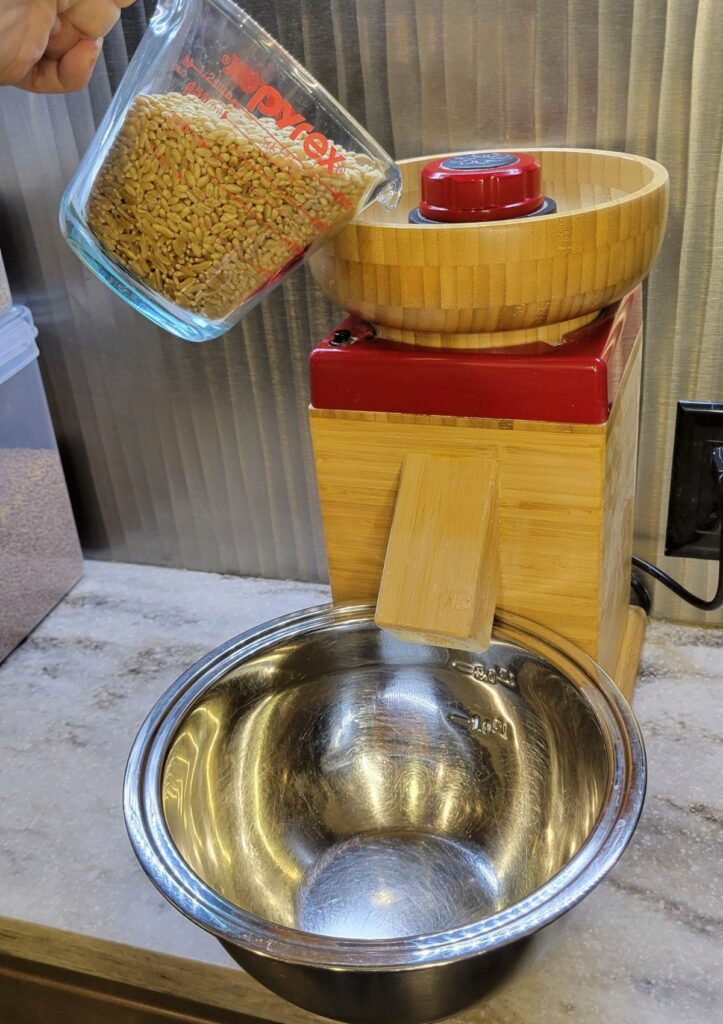
GISP= Grains In Small Places
GISP New Methods (Secrets To The Perfect Fresh Milled Flour Bread)
My methods are new, and not what all the other blogs and teachers are teaching. So, it goes “against the grain” of a lot of other resources available. But, I have true trial and error testimonies from myself, and many others who have used my methods.
Unfortunately, there is outdated information out there. But, thanks to the GISP method, fresh milled flour can make soft squishy breads, just like the sandwich breads in the store. With the other methods, the bread is still wonderful, and there are times I want a slightly denser loaf. So, I will make it both ways, and there is nothing wrong with that! We all like different things.
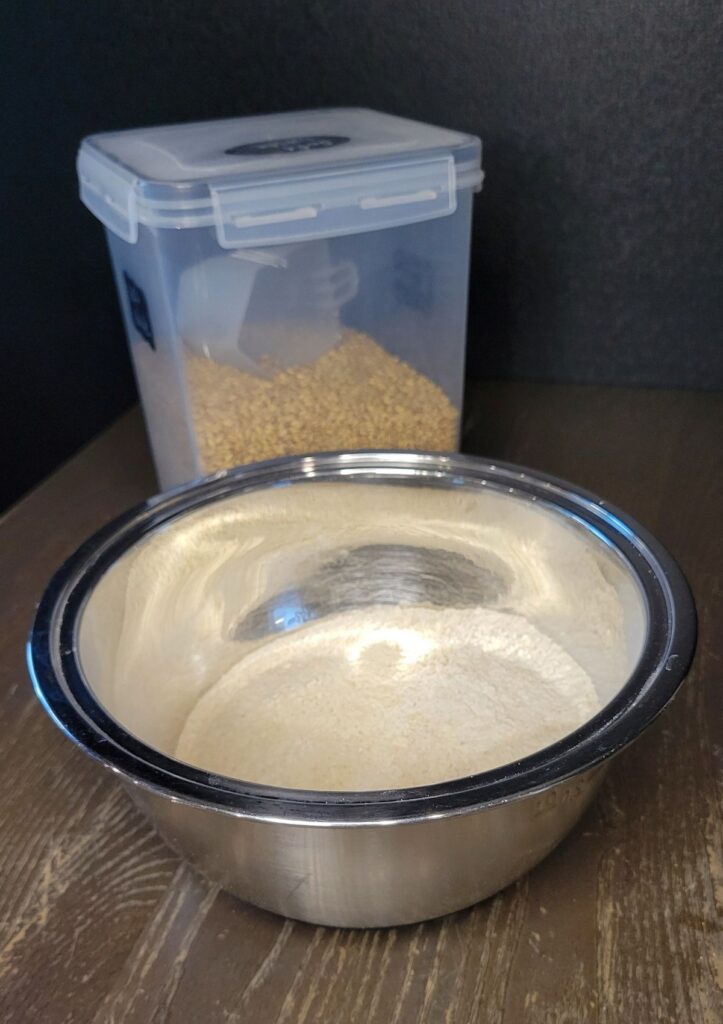
“Mom, Will You Just Buy Bread From The Store?”
But, my passion came one day when my son said, “Mom can you just buy me a loaf of bread from the store?” …. I almost cried, I did cry inside. So, I was determined to make my bread just as delicious, or even better than store bought bread. And, you know what? I did buy him that loaf from the store, and he didn’t like it!!! Hallelujah! I had done it! So, I had to share my methods with the world!!! Or to anyone who would listen.

What Wheat Do I Use To Make Fresh Milled Flour Bread?
So, before we dive in to the secrets, we need to talk about what wheat varieties to use for breads. The majority of the fresh milled flour you use for bread should consist of hard white wheat or hard red wheat. This is because it has a higher protein, is strong enough to raise bread, and will develop gluten. You can add a small amount of ancient grains, or other wheats to the hard wheat for flavor, texture, etc.
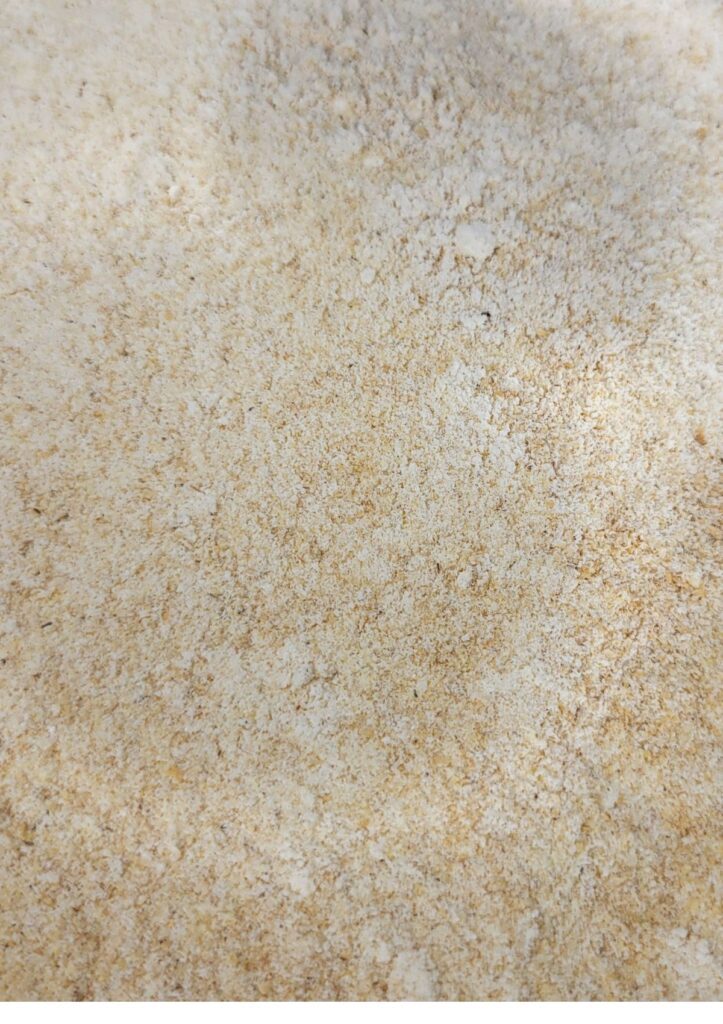
GISP Method – Secrets To Fresh Milled Flour Perfection!
These are just basic steps that I have outlined that can be used with any fresh milled flour recipe! So, if you have a favorite one, try using these GISP methods with it, and see if your results improve! If so, I would love to hear about it down in the comments below!
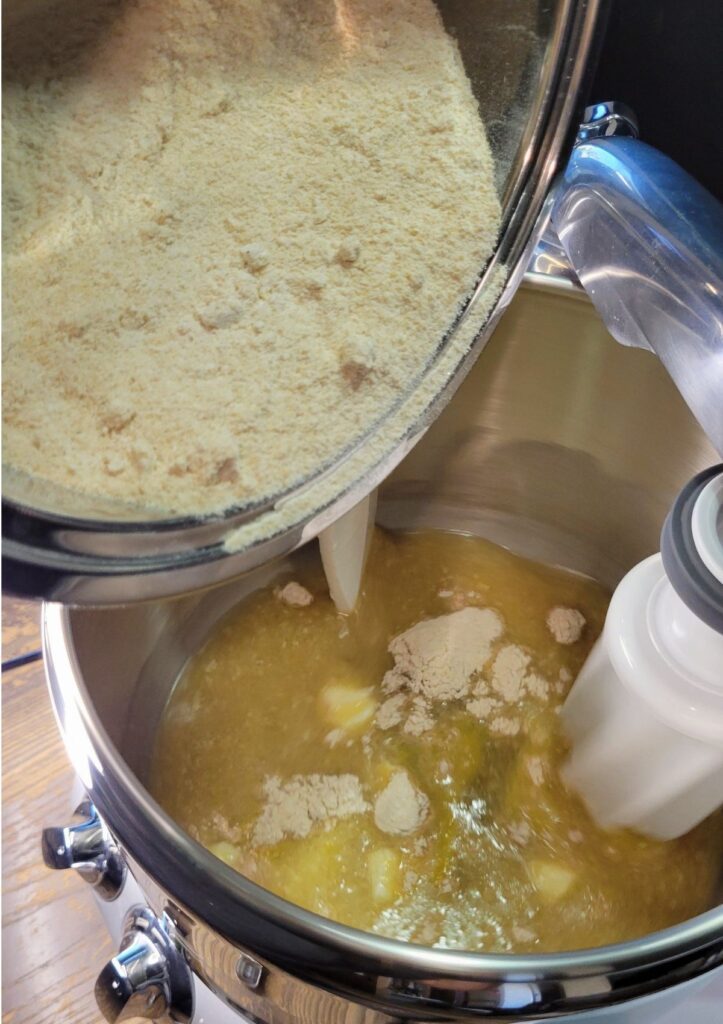
Step One – Autolyze
What do I mean by Autolyze? I have a particular method that I like to teach that may be a bit different from other autolyzing methods you have heard of. Firstly, I like to mix all of my ingredients together except the yeast. I mix them all together until incorporated, then cover and let sit.
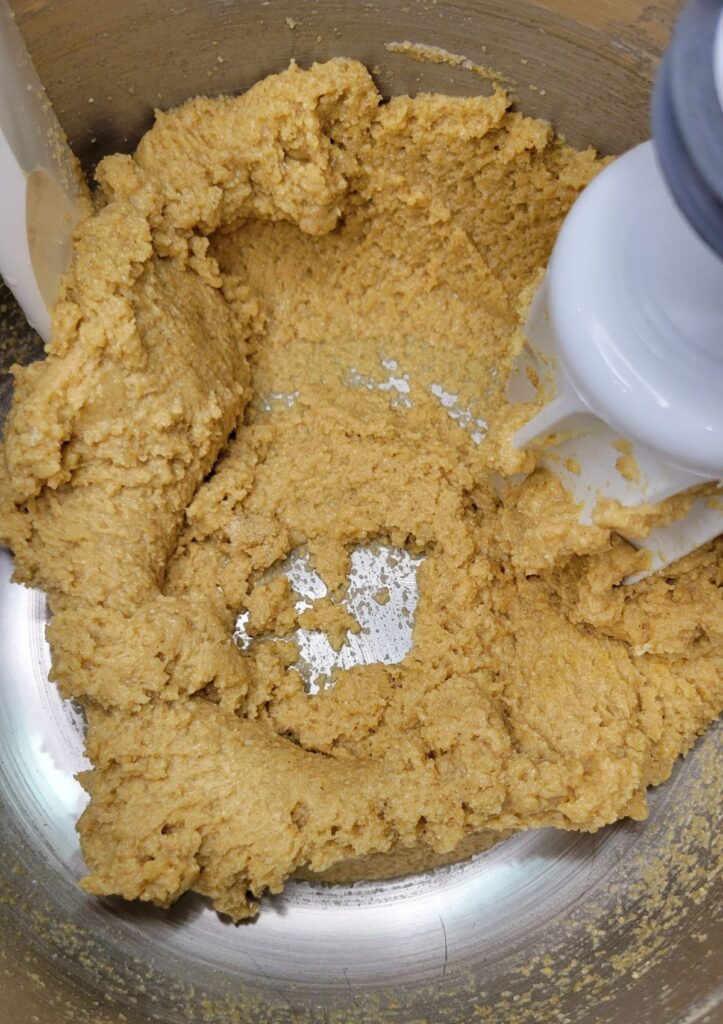
This resting period needs to be a minimum of 15 minutes, but can last longer if you need to work around your schedule. Remember, the yeast is not in the dough yet, so you don’t have to worry about rise times or over proofing if you need to run some errands, or life happens, and you just forget about it.
The rest period allows time for the freshly milled flour to start absorbing the liquids, which takes much longer than white flour does. Also, this allows the bran to start to soften. Unsoftened bran will work against you, as it’s sharp edges can tear and break apart the gluten strands you are trying to develop as you knead the dough.
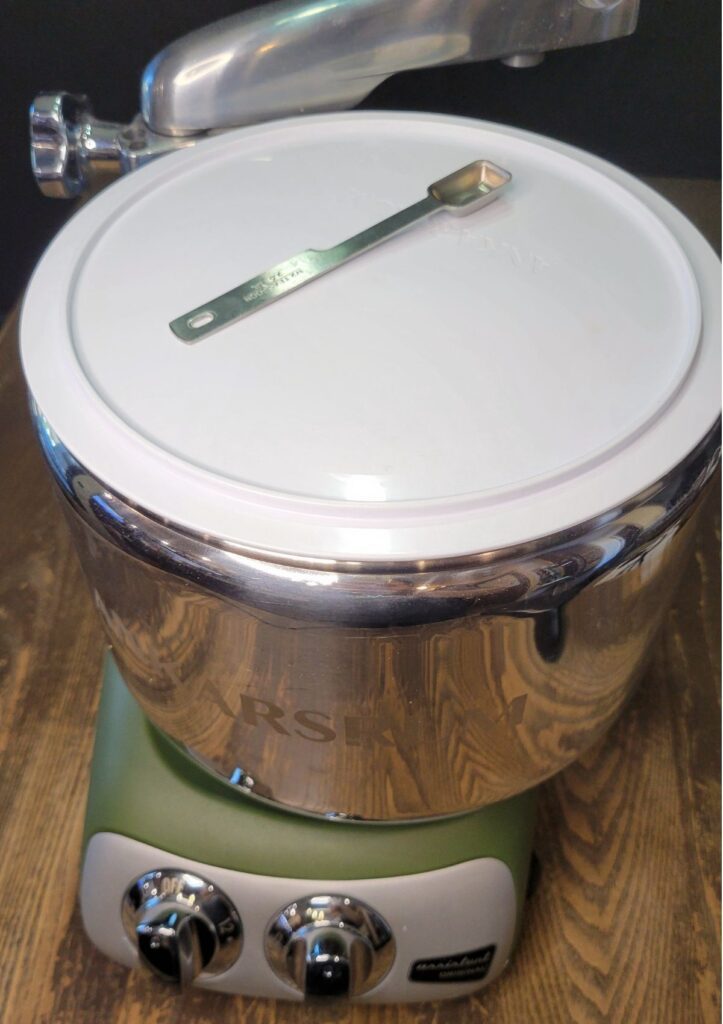
Don’t Forget The Yeast!
I like to leave my measuring spoon on top of the bowl to remind me to put the yeast in before I start the kneading process. So, after this autolyze period, I will then put in my yeast and start kneading. This brings us into the next step of the GISP Method, which is kneading.
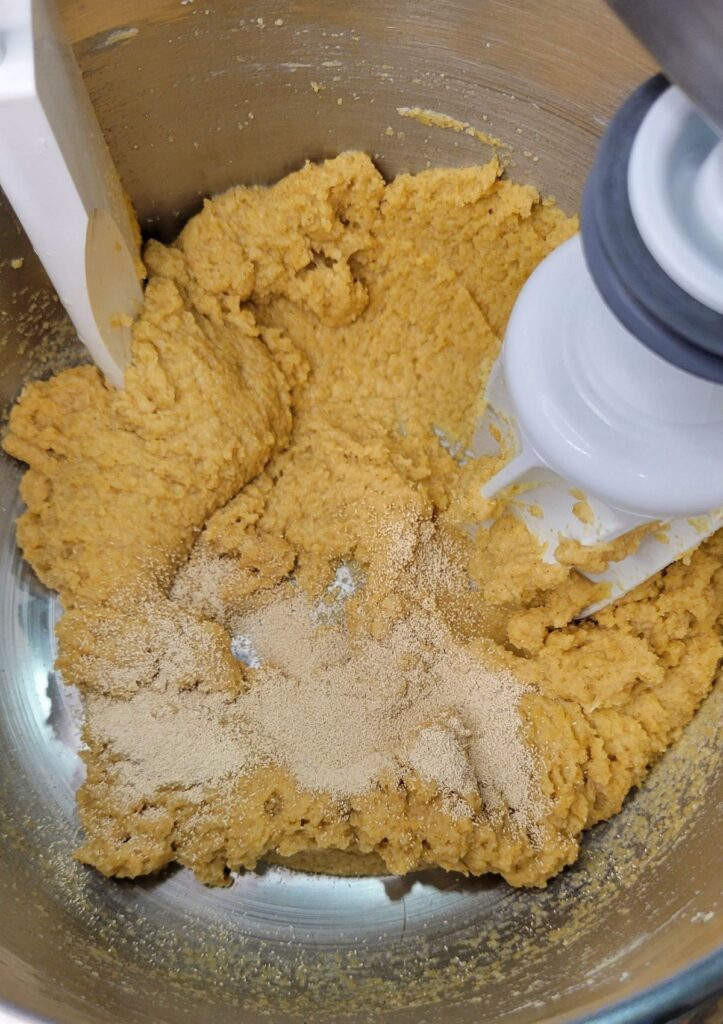
Step Two – Working With A Wet Dough
However, before we can talk about the kneading process, we must address the elephant in the bowl! I am sure at this point you are asking, isn’t my dough too wet? Should I add more flour? This just doesn’t seem right. Did I mess something up?
Chances are you did everything right, but you may be used to working with white flour. The older methods where you are told to keep putting flour into the bowl, until the dough pulls away from the sides, just doesn’t work great with fresh milled flour. Again, these methods will still give you decent results, but not the super soft, fluffy squishy breads. Too much flour will equal denser bread. So, fight this urge to add more flour. You need a wet and sticky dough for these methods to work.
Later, I will talk about the window pane, but if the dough is too dry, then no matter how long you knead the dough, it will never, I repeat NEVER come to a window pane. The number one reason that the window pane is not achieved, when people contact me with issues with their bread, is too much flour! I was there once, I knew how to make bread with white flour, and just assumed it was the same. But, boy was I wrong!
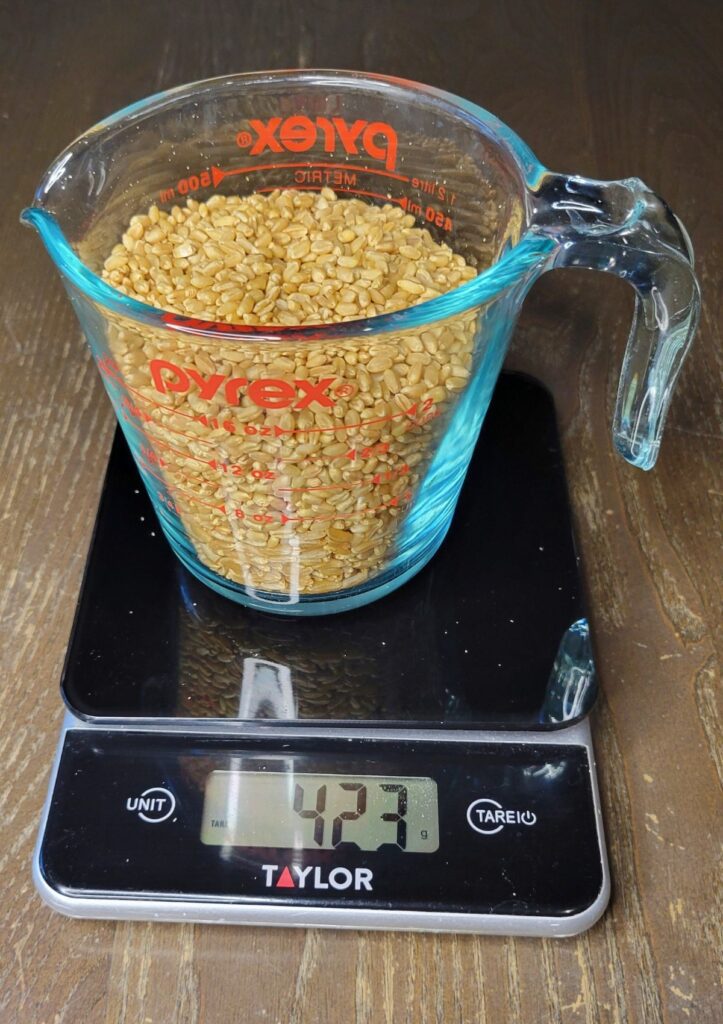
Step Three – Kneading
How Long Do I Knead Fresh Milled Flour Bread?
There is no hard and fast rule to go by when it comes to kneading times. And, any recipe that says knead for 5-7 minutes is probably not going to give you the best results. (These shorter kneading times may work for white processed flour, but not fresh milled flour.) Again, those older kneading methods will still give you decent bread, but not the super soft, fluffy, squishy breads.
Mixer Varieties
There are many different mixer varieties out there, and I have used many. In fact, on my You Tube Channel I have reviews of a few of them. But, a good quality mixer is worth it’s weight in gold! Because there are times I have to knead in a mixer for over 20 minutes! So, you can imagine kneading by hand what a labor of love that can be!
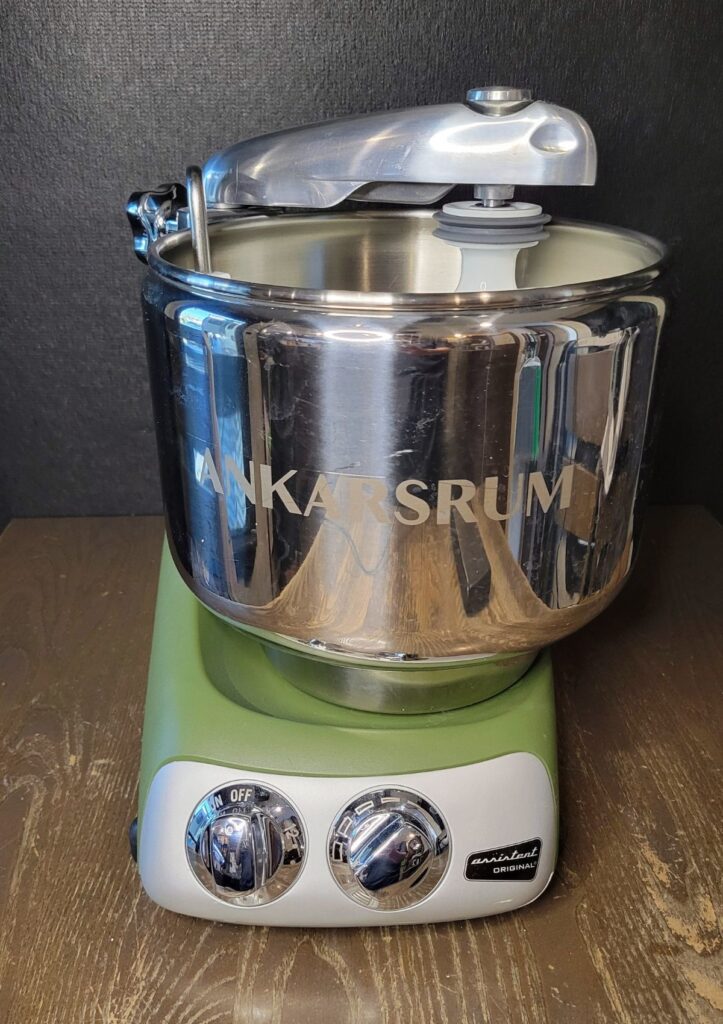
So, rather than be concerned about the time of kneading, I really want you to start watching and feeling your dough. I know this is strange, and when you first start out, you may not understand what I mean by this. But, as you make bread with fresh milled flour over and over, you will see what I mean.
You want to look for stretchy smoother dough after kneading. Sometimes you may need to take your dough out of the mixer, scrape the sides an flip it over. Start kneading again, and it will come together before your eyes! Once you see this transformation of the dough happen, it will change your bread making skills for life!
Kneading For The Window Pane Test & What Is A Window Pane? GISP Method
I don’t want you to get too focused on the window pane, this is just a little test we can do to make sure the dough is nice and stretchy, and that the gluten strands have been formed and are strong. It is ok to continue on without a window pane. But, when you do achieve that beautifully stretchy dough it gives you a sense of satisfaction like never before in bread making!
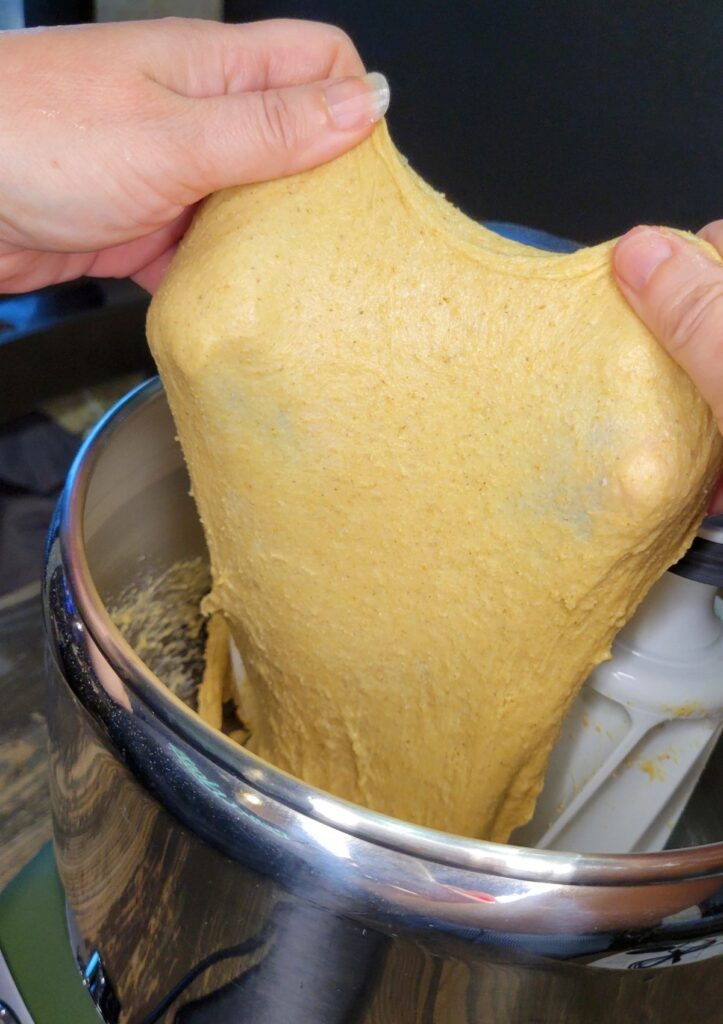
Can I Hand Knead Fresh Milled Flour Bread?
I do offer a few recipes that are made for hand kneading, but my most popular recipe for people that don’t own a mixer yet is my No Knead Bread, you can find that recipe HERE. This is a denser heartier boule type loaf.

So, now that we covered some of the important tips for yeast bread, if you are interested in sourdough, I have a GISP Method for it too!

Bonus Section – Sourdough Secrets – GISP Method
This post is just loaded with all my secrets! Heck, it’s after 1 am, so I must just be tired. Maybe I will regret telling everyone! LOL.
Step One (Sourdough)- Higher Hydration
I have found working with sourdough and fresh milled flour, that I need higher hydration levels. Fresh Milled Flour is just so thirsty! (with the exception of soft white wheat, which we don’t use much in bread baking, so that is a whole other post) So, I have increased the hydration in my sourdough boule loaf recipe HERE to account for that.
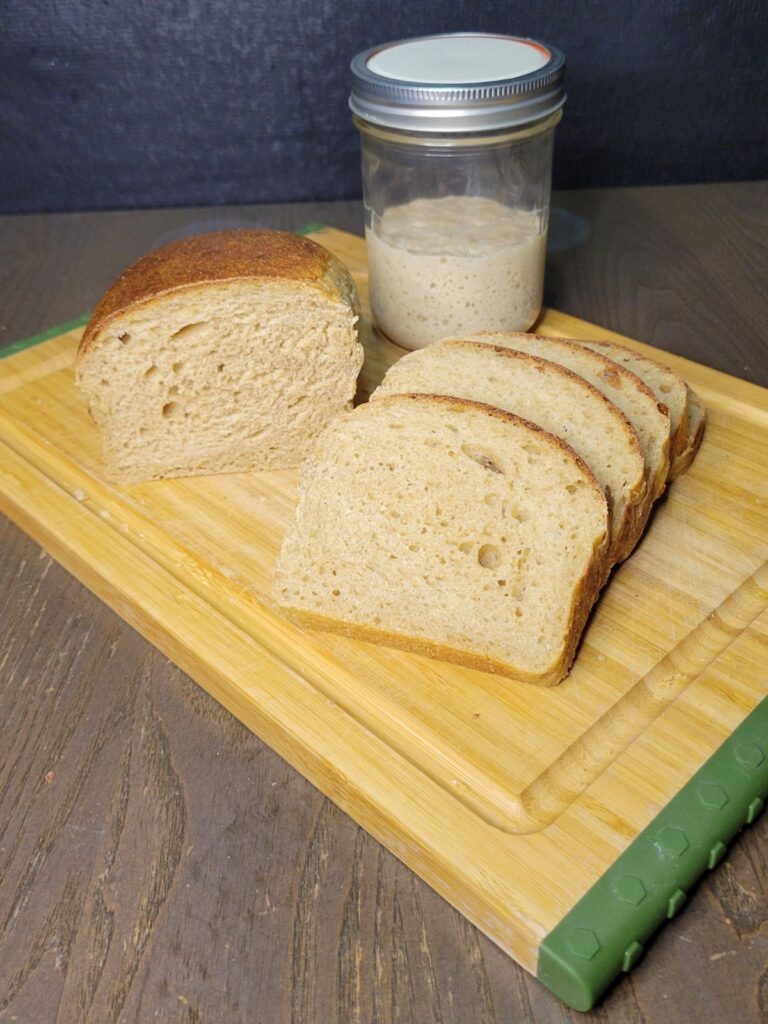
Step Two (Sourdough)- Fermentation Times
Also, it is important to note that Sourdough made with fresh milled flour ferments faster, there is just no way around that. Because it ferments much quicker, this makes an overnight ferment very difficult with fresh milled flour sourdough breads. I have found that it just gets too acidic.
So, I recommend either a very short time in the fridge, or not in the fridge at all (This is what my family prefers.) I just start making it in the morning, then play with it all day doing stretch and folds, whenever I can work it into my schedule. I will bake it in the evening. Then, the hardest part… Let it sit… All night long… This allows the loaf to cool completely before cutting into the loaf. I just plan on eating it the day after I make it.

Making Your Own Sourdough Starter With Fresh Milled Flour- GISP Method
I have some resources to make your very own sourdough starter using 100% fresh milled flour. I show you step by step in my video HERE, and I make one right along side of you! If you prefer to read the info, I have a post on how to make your own sourdough starter from scratch with freshly milled flour HERE.
So, I hope this information was helpful to you! Please feel free to share the link to your friends and family, or whenever you hear someone that is struggling with fresh milled flour bread. Help me get the message out, the GISP Method is new and here to stay! I want to be a resource of help and encouragement, please spread the word!
Sincerely,
Kara
Shop This Post
Nutrimill Harvest Grain Mill – Use Coupon Code: Grainy for $20 Off yours
Azure Standard has some great deals on grains
Checkout Some Of My Fresh Milled Flour Recipes Using The GISP Method
Make Your Own Sourdough Starter From Scratch
All Purpose Flour Blend With Fresh Milled Flour
*This post contains affiliate links, which means I make a small commission at no extra cost to you! As an Amazon Associate I earn from qualifying purchases. But, I will only suggest items I actually Love and Have Used!

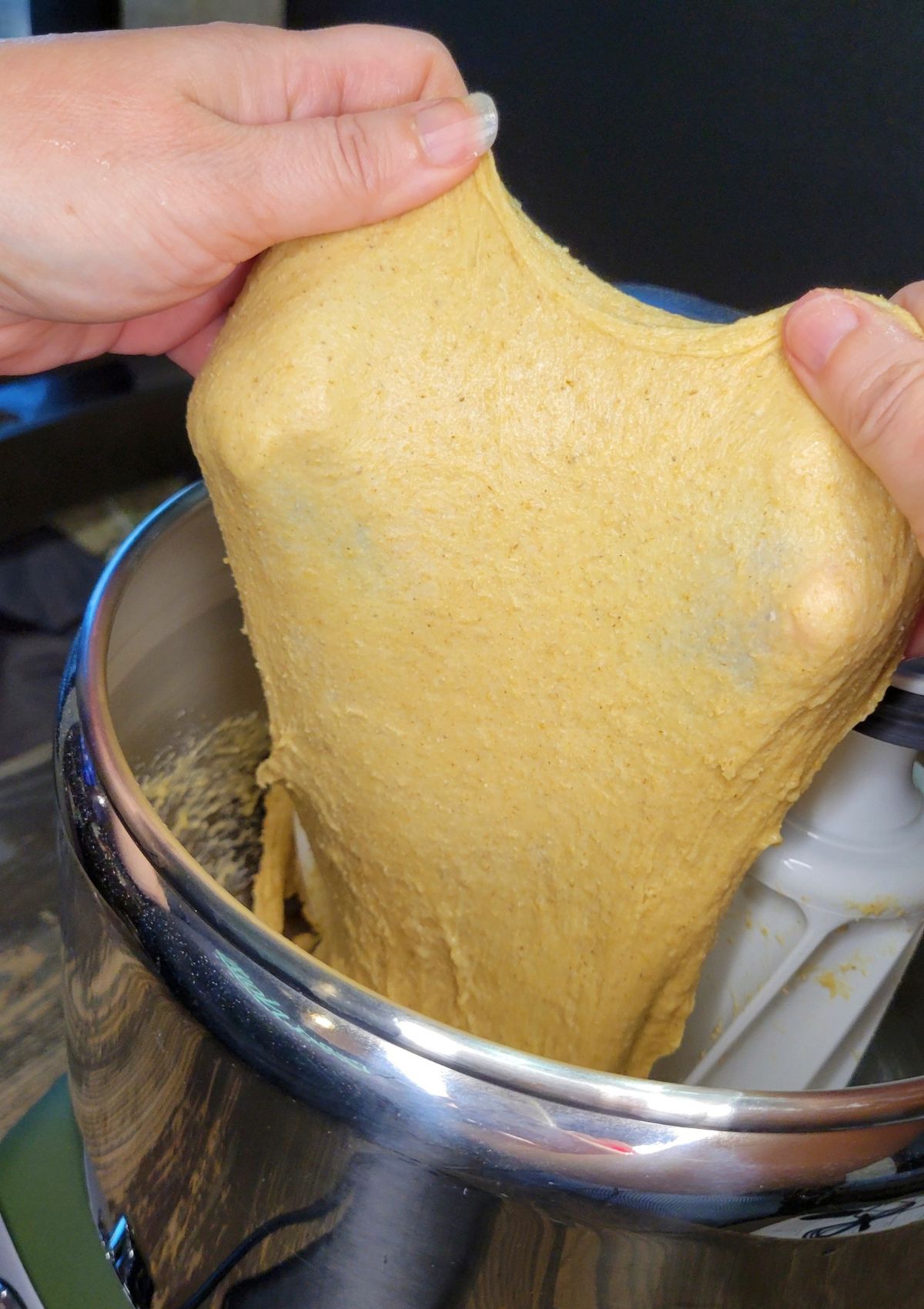


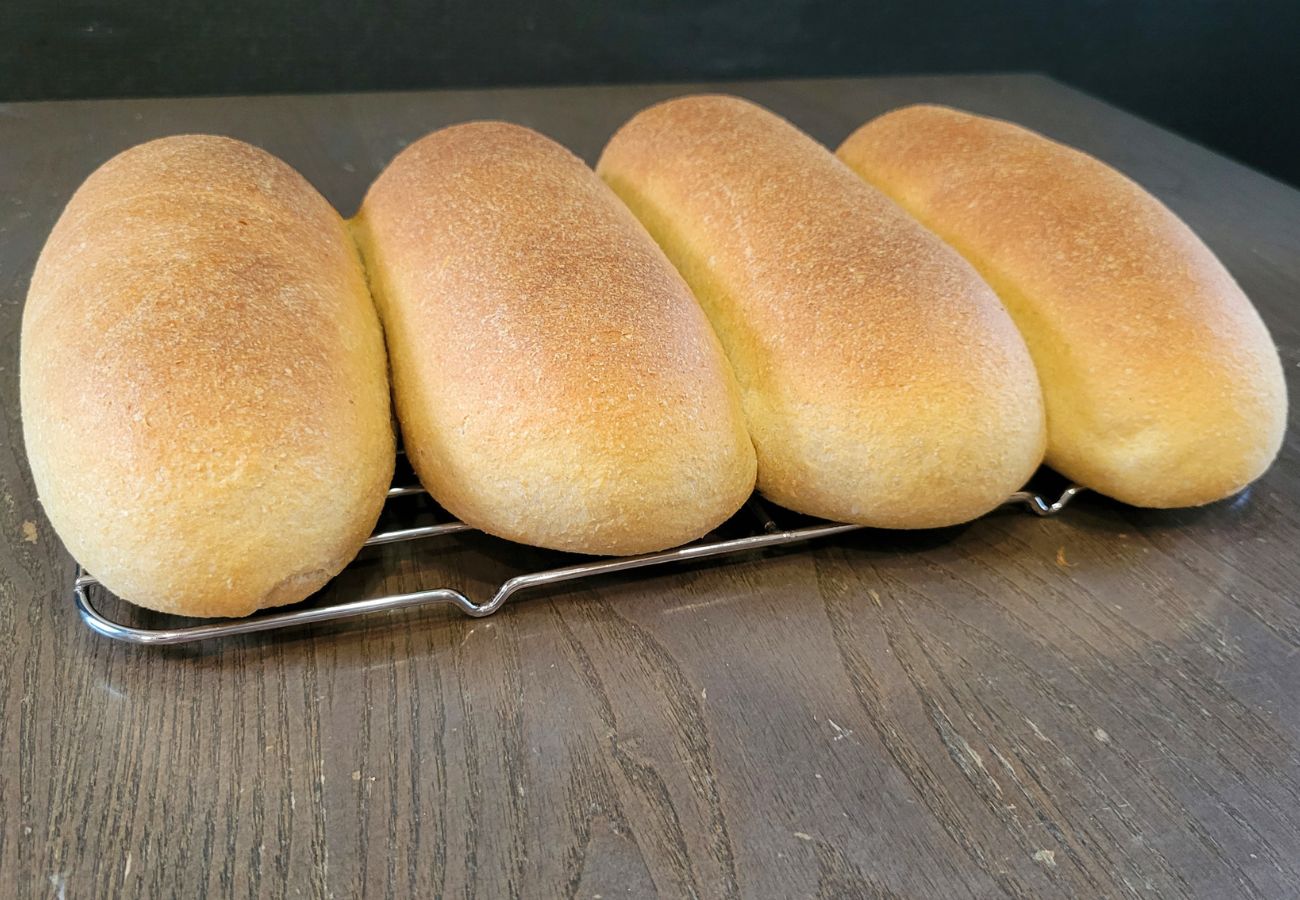
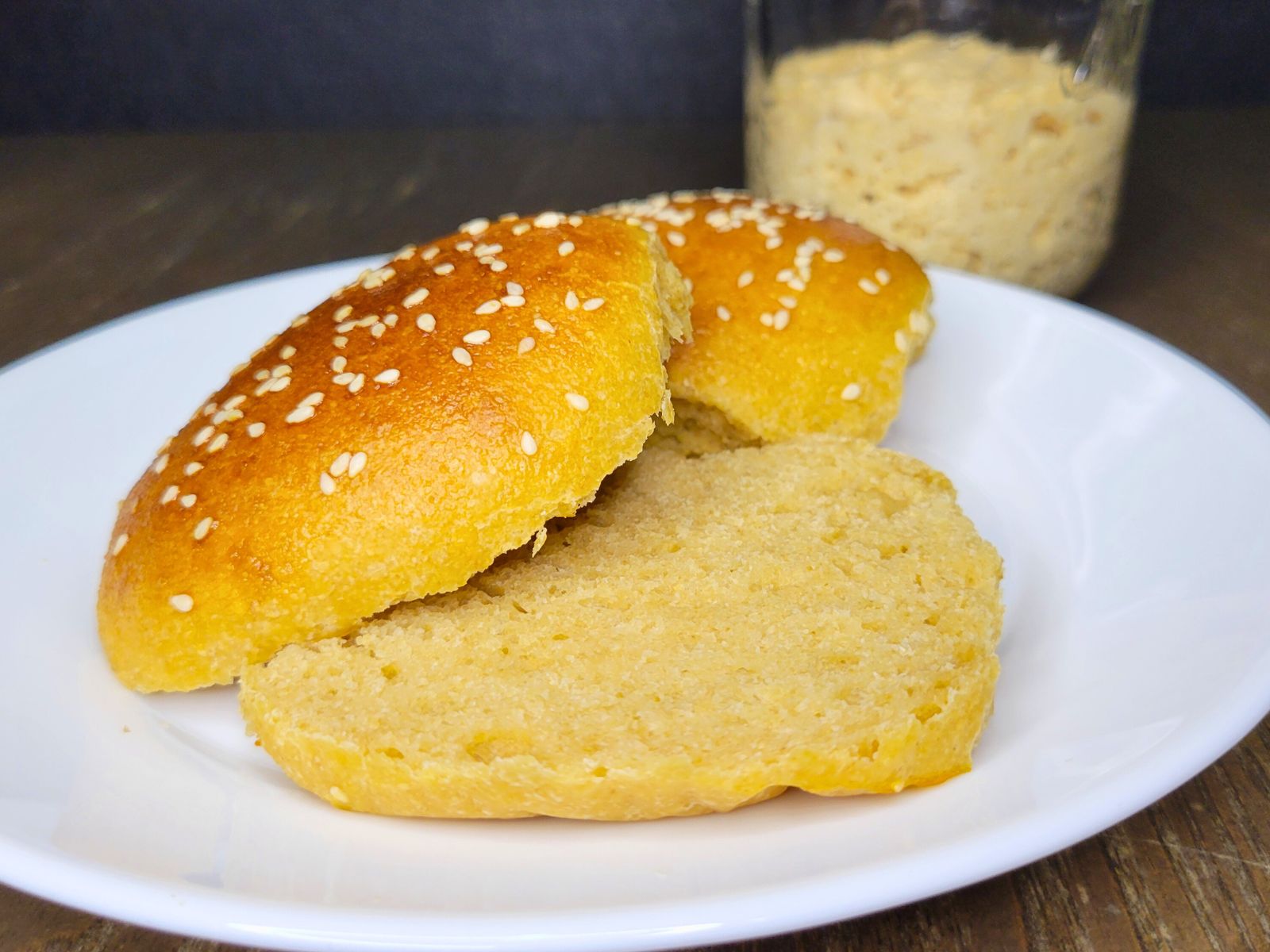


Do you have a link for the mixer bowl lid/cover? I’m going through too much cling wrap!
Here is the link to the mixer, it comes with the b owl & lid cover! https://www.gopjn.com/t/8-12416-319338-206096?url=https%3A%2F%2Fpleasanthillgrain.com%2Fankarsrum-swedish-stand-mixer-heavy-duty-kitchen-mixer
I noticed for your sourdough recipes you add the levain right away and then autolyse but with yeast you hold the yeast back until the autolyse is complete. Would you explain the reasoning behind that?
I do this so that the sourdough starter has a chance to start working right away. It takes much longer to ferment than yeast. I wait for the yeast dough, because I don’t want the yeast to exhaust itself before baking, causing the loaf to fall or deflate. With sourdough, I know there is more time needed for the rise/ferment, so I put it in right away. I hope this makes sense!
I have been making sourdough bread for a couple years, but just started using fmf. I’ve tried your sourdough sandwich bread, fmf yeast sandwich bread, sub rolls and poptarts. OMG … you have simplified the process. I have also been watching your videos and have learned so much. Thank you so much for sharing your knowledge!!
Yay! I am so happy to hear that! Thank you so much! 🙂
Thank you soooooo much for sharing your hard earned information with us! It is so helpful and a huge blessing! we are a one income family and finding free secrets to making healthy foods at home is not always easy, thank you thank you thank you for helping us out!!
Do you by any chance have a secret to knowing when your sourdough is properly proofed? In Florida I expect my doughs to ferment more quickly than in most of the US, and as you have shared fresh-milled doughs ferment more quickly in general. Other than just baking it and seeing what happens, how can I know that the dough is ready to be shaped?
You are very welcome! I am so happy to hear it is helpful to you! Thank you! The way I check to see if my sourdough had proofed is check and make sure it appears to have doubled, but also it should seem more smooth and soft (almost pillowy) But, most of all, I wet my finger, and gently poke the dough. If the dough springs back quickly, then it still needs rising time. (even if the indent doesn’t fill back in all the way.) If the indent comes back slowly, it is ready! If the indent stays and doesn’t fill back in at all, then it is likely over proofed. I hope that helps! Happy Baking!
Kara I can honestly say that I was not successful In a super soft squishy loaf of bread EVER (even with dead flour) until I used your recipe for the everyday loaf and your methods. It was a complete game changer for me. All the things I’d read said to find 1 recipe and master that before making other bread recipes and I’ve only
Been milling 3-4 months- and I have not made any other regular everyday bread yet. I really like this one and how it turns out- time after time after time- thanks to YOU and your methods!! Especially to add all the flour to soak for a few. I could never understand other recipes are only soaking 2/3 of the flour. But thank you Kara! I’ve made so many of your recipes! Graham crackers just last night. I really want to try focaccia bread and brioche buns but they are still a little intimidating yet. 😁
MILL ON EVERYONE!!
I am so happy my methods have been helpful! Yay! Nice job! You got this! I have videos for the focaccia that is super informative! And I have a video for the buns too! We can make it together, and just pause me while you are making it! Happy Baking!
Hi Kara. I milled back when my kids were small.. they are now grown and I have been remiss in mailing for the last several years. My husband and I decided we wanted to start back and I am researching all of your videos! It is definitely a learning curve for me, but I do believe old dogs can learn new tricks! would you please do a video or post a blog about yeast? I have the mail I have the berries and I bought a jar of active yeast. Can you please describe the process of activating the yeast or do you just put the dry active yeast in after flour has autolysed? I’m in WA state – the wet & cold west side!! I’m sure that makes a difference!! Thank you for ALL the info and sharing your knowledge!
Dawn
Hi! I am so happy to hear my videos are helpful! For active dry yeast, you just need to hold out some of the water in a small bowl from the recipe, and a pinch of sugar. Place the yeast in that water, let it sit room temperature for 10-15 minutes. It should get nice and foamy. Then you can put it in the recipe when the yeast is called for. I often use instant yeast, and just put it in the mixture dry. I hope this helps! Happy Baking!
So happy to find this site!! I’ve used milled flour for years…off and on. The only 1 I found was the Bread Becker method. It’s good but not completely what I wanted. Your method makes more sense. I sadly found that that I’m allergic to sourdough but looking forward to using your other recipes! Thanks!!!
I am so happy to hear my methods are helpful! I’m sorry to hear you are allergic to sourdough, but the great news is that I have tons of non sourdough recipes! I also have a Youtube channel for most my recipes as well. Thanks so much! Happy Baking!
I love your site so much! It has been my go-to place for recipes as I am starting the journey with freshly milled grain. One of the biggest differences for me has been milling my flour as finely as my wonder mill allows. This has made softer breads and has made it easier for my kids to convert to FMF for all kinds of recipes!
Yay! I am so happy to hear it is helpful! Nice job momma! Thanks! 😊
Kara,
You have an Ank ! I’ve had mine a few years now, it has a learning curve but I would never go back. Autolyse, absolutely! Learned that years ago and you seldom here people talk about it. Especially needed with whole grain.
Looking forward to using your recipes,
Victoria
Yes! I love my Ankarsrum as well! Thank you so much!
I, too, have thought I should keep adding flour until it comes away from the sides of the bowl. If you don’t follow that rule, how do you know when to stop adding flour? I’m struggling to know when it’s right so my bread will kneed properly in the mixer.
I recommend watching my video about soft sandwich bread here. Lots of tips about that. 🙂 https://youtu.be/VYOZsbspepE
When I was getting inconsistent results with fresh milled bakes I discovered you on YouTube! What a gem I found.
I’ve followed tips and tricks from others, even very well known teachers of fresh milled bakes. My outcomes varied, some recipes worked others not so much.
Your methods and recipes have never failed me.
I ordered your cookbook, it just arrived today. I can’t wait to try recipes I have not yet tried. And I am so excited to have all your info put together in a book with all the clear to follow directions I have come to expect and exceptional pictures.
I am very thankful for the time you put in to learn all this and your willingness to share it with us.
You have been a blessing to my kitchen and our health.
I am so happy to hear that! Thank you so much! 🙂
We have just started milling and have had inconsistent results with bread. We are milling hard white and hard red sprouted wheat berries. Can you tell me if your method and recipes work with sprouted wheat berries? Thanks
I have not experimented with sprouted grains that much, but I would assume they would all work nicely, maybe need a little less moisture. Let me know how it goes! Thanks! 🙂
Hi. I’m just starting out on this journey. I am currently making sourdough sandwich bread but use half all purpose white and half whole wheat flour. I also add in fresh ground flax seed. What mixture of berries will give us that same combination? Or is that possible?
Thanks for the help.
I would recommend starting out with some recipes for fresh milled flour, then learning how the dough looks and acts differently than white flour and even wheat flour. It needs to be a bit on the wet side, because it takes longer for the liquid to absorb into the freshly milled wheat. Here is my sourdough sandwich bread recipe if you want to give it a try. https://grainsinsmallplaces.net/sourdough-sandwich-bread/
🙂
I’ve been bread baking for 30 years but I’m learning so much from your posts as I explore fresh milled sourdough. Your son asking for “store bread” reminded me of when my now 20yo was 4. We were learning about American Indians and chose names for ourselves. He wanted to be called White Bread! “That yummy bread from the store mommy.” That began my quest into sponges, autolyse, & fermentation, all in an attempt to create bread he’d want to be named after. LOL
Fun story! Thanks for sharing! 🙂
Hi there! My son is allergic to eggs. How crucial are eggs to your recipe? Thank you for your help!
I have a bread recipe that does not call for eggs also. But, in general, you can omit the eggs in most bread recipes, and increase the liquid a bit to offset it, the texture will be slightly different, but still delicious!
https://grainsinsmallplaces.net/how-to-make-bread-without-eggs/
Hi!! I’ve been making bread for couple of years using white flour. Just started this journey into milling my own! Here’s where I’m hung up – I’m conditioned to activate my commercial yeast before proceeding with mixing all the ingredients, etc. and I’m conditioned to think that the yeast won’t activate without warm water. But if I autolyse and then just add in the yeast (and I assume I’m adding it to a bowl of room temp ingredients), how will I know that the yeast activated? Am I over complicating this? 😂
You can just hold a bit of the water from the recipe out and a pinch of sugar, and activate the yeast during the autolyse. Then put that into the recipe when it calls for the yeast. BUT, lately I have been just adding my active dry yeast into the dough without activating, and it has been working just fine. But, you do what you prefer. Happy Baking! 🙂
Am I supposed to be weighing my wheat BEFORE it is milled, as you pictured here? I’ve been weighing after, and it’s almost always too wet to achieve windowpane, or to work with at all, even after autolyzing and then running my poor mixer for over 30 mins. It is also very fragile after baking.
You can weigh it before or after. I like to weigh before, and when I mill it that will give me that amount of flour after milled. For example 100g of grain should equal 100g of fresh milled flour. However, this does not work the same with volume, 1 cup of grains does not equal 1 cup of flour. I have a new video out about dough that is too wet and how to handle that here. https://youtu.be/tdnCrbOsVag?si=LAT2xTjr_pLZ4Ae4
Do you happen to have a printable version of the GISP method? A short and sweet bullet list that I could stick in my recipe binder? Love your channel and recipes. You have inspired me to pull out my Nutrimill Classic (after 20 years of no use) and start grinding my own grain again!
I don’t have a printable version at this time, but that is a good idea I may look into. Thanks! 🙂
So, do you weigh the grain before milling or after? I could NOT get my dough even close to a windowpane and wondered if it was too dry.
I weigh my grains before milling, but it should give you the same weight before and after. For example 100g of wheat berries after milling, should equal 100g of fresh milled flour. This does not work the same with volume, however. So, 1 cup of grains does not equal 1 cup of flour. I hope that makes sense.
But, yes if your dough is too dry, it will never come to a window pane. I have some videos that may help. This is a great one. https://youtu.be/G7dWEzCWkgU
Today I found (and made) your cinnamon swirl bread and the register bread per one of your u-tube videos using the 4×8 loag pans. I have NEVER had such a nice soft loaf of fresh ground hard wheat! Your efforts are SO VERY much appreciated!!
Awesome! I am so happy to hear that! Nice job, thanks so much! 🙂
I have been making FMF bread for almost 3 years but have not tried the autolyse method. I intend to try it ASAP. One thing though, I like to make cinnamon raisin bread; when would I add the raisins?
Yes, it is a game changer with fresh milled flour. You can fold the raisins in the dough at the end of kneading when the dough is nice and stretchy.